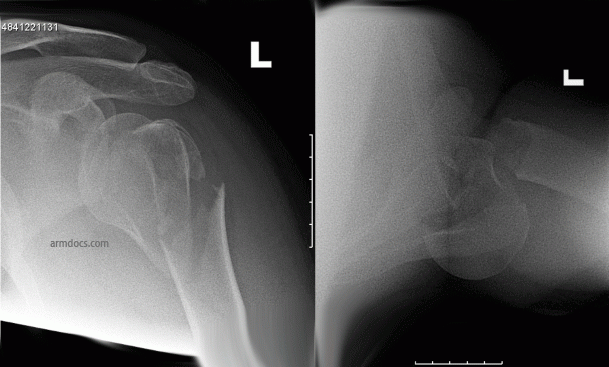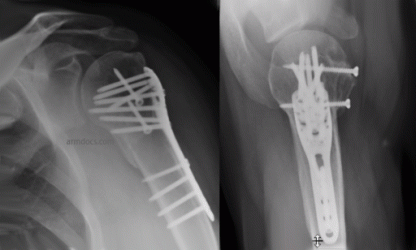How is the procedure performed?
The operation is performed under a combination of general and regional anaesthesia. The fracture is exposed, the bone fragments realigned and then fixed with a plate and screws or other device such as an intramedullary nail. The fixation may occasionally be supplemented with bone grafting using “off the shelf” bone substitutes or augmented using bone cement.
Benefits
Surgery allows the displaced bone fragments to be realigned and fixed in a way that restores and maintains the shape of the bone. This is turn allows an earlier and better recovery of function.
Risks
Medical complications
Chest infection, Deep vein thrombosis, Pulmonary embolism, Myocardial infection are possible after surgery.
Surgical complications
Infection: This can occur after any operation where metal devices are implanted in the body. Several measures are employed to minimize the risk of infection including administration of antibiotics prior to the operation, an antiseptic technique and the use of a clean air theatre.
Nerve or vascular injury: This is possible but rare.
Bleeding : Bleeding may occur during or after surgery. A blood transfusion is rarely required. In very rare instances a blood vessel may be damaged as a consequence of injury or surgery.
Fixation failure: If the bone is weak due to osteoporosis, the plate and screws may not hold well and the fixation may fail. This may in turn lead to implant migration.
Implant migration: If the bone collapses during the course of healing then the screws may penetrate the joint or loosen.
Malunion: Sometimes the bone may heal with an altered shape. In some instances the shoulder may continue to function well despite a malunion but if function is affected then further surgery may be considered.
Nonunion: Occasionally the fracture may fail to heal. This is likely to require further surgery.
Stiffness: This is not uncommon following injury and surgery. In most instances it will resolve as you start moving the arm with the aid of physiotherapy. If stiffness persists upto 9-12 months after surgery then further surgery may be considered to treat the stiffness.
Avascular necrosis: Occasionally the humeral head may be deprived of its blood supply as a result of the injury. This may result in bone death leading to collapse of the bone and subsequently arthritis.
Implant related symptoms: Metal implants may occasionally irritate the joint, the soft tissues or sometimes lead to aching in cold weather. If these symptoms are troublesome, removal of the plate and screws may be considered.
Aftercare
Following the procedure the surgical wound is covered with a shower-proof dressing. The dressing should be left undisturbed as far as possible for 14 days. If the dressing is removed for any reason they should be replaced with similar dressing or waterproof plaster. Prior to discharge from hospital a physiotherapist will provide instructions about looking after the shoulder. You will be advised to protect the shoulder by wearing a sling and intermittently performing movements of the shoulder within certain limits. You will be encouraged to move the elbow, wrist and hand to prevent stiffness. After 4-6 weeks you may stop wearing the sling and will be allowed to move the shoulder actively through a greater range. You may resume driving when you have regained control of the arm. This may take anywhere between 8-16 weeks. Strengthening exercises are started after 12 weeks or once the fracture has healed. Vigorous use of the arm or lifting heavy objects should be avoided for at least 3 months. Outpatient physiotherapy will be arranged and may need to be continued for 6-12 months.
Follow-up
An appointment will be arranged for you to be seen between 2 and 6 weeks after the procedure. Follow-up is required for at least 6 months after surgery or until a satisfactory recovery is achieved. X-rays will be performed at intervals to monitor fracture healing.


